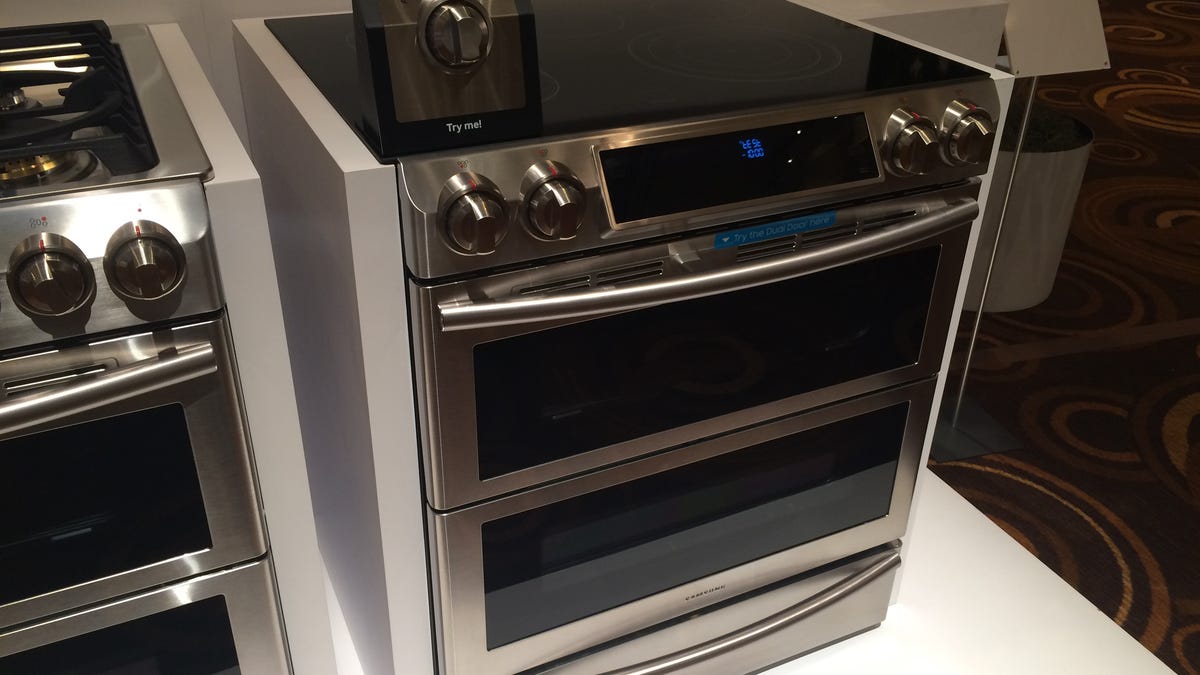What are the ingredients to the smart kitchen?
Manufacturers showed off new large kitchen appliances at this year's CES in Las Vegas loaded with additions that set the stage for the next wave of smart kitchen innovation. But what will it take for smart kitchen appliances to succeed with consumers?
I returned from my first CES exhausted and underwhelmed. I spent a week walking miles (so said my FitBit) of exhibit space to explore the newest tech products with an eye on cooking gadgets. Other than the addition of Wi-Fi to some Samsung and Whirlpool ranges, there were slim pickings for new innovations in cooking. But it turns out that this seemingly slow year for cooking tools at CES was our chance to take a deep breath before the pieces of the connected kitchen begin to come together.
With the addition of cameras, Wi-Fi and software to large kitchen appliances, manufacturers are poised to deliver a connected kitchen in the next couple of years that will change our relationship with food -- if they can nail the technology.
Large kitchen appliances have straggled behind other gadgets in the connected home. It takes a lot longer to design, produce and upgrade large appliances as opposed to smaller smart products such as a frying pan or coffee maker. You don't replace large appliances nearly as often as, say, a smartphone, so manufacturers have to make smart white goods that will have decent staying power. And convincing consumers to add new technology or adopt new cooking practices is a tough proposition, said analyst Michael Wolf, the founder of the Smart Kitchen Summit.
"There's connectivity and there's reinventing core cooking, and both are moving along at a relatively slow pace," Wolf said.
But the past few years have shown significant, but subtle, strides in the appliances that store and cook our food. Though Whirlpool and Samsung both debuted ovens with Wi-Fi at CES, we've seen that upgrade in ovens for at least three years. Samsung, LG and Bosch have created refrigerators equipped with cameras that let you get an inside view of what groceries you do (or don't) have on hand. We've seen cameras in ovens, too -- an Electrolux wall oven we saw at the IFA show in Berlin and the yet-to-be released June Intelligent Oven. And with companies eager to bring new software into these appliances, we're a year or two away from seeing significant innovation in the smart kitchen.
"This is going to be a great year for this category," Wolf said.
So what will make a smart kitchen succeed in real-life homes?
The June Intelligent Oven can recognize foods and recommend cook settings.
Food recognition
We can take pictures of the contents of our refrigerator and oven, so the next step of smart appliances will be to tell you what those contents are and what you should do with them. For example, the company Innit has built a software platform that will identify the food in your refrigerator and tell you when it expires. Innit also wants to use its software to identify the food in your oven and tell you how to cook it. The June Intelligent Oven, a countertop unit that is scheduled to ship this year, promises to recognize a selection of foods and recommend cook settings for them.
Feedback from the Pantelligent app.
Education
Smart large appliances can become as useful as a microwave or as passé as a fondue set, Wolf said. Companies will have to educate consumers on how to incorporate technology into their kitchen routine. For example, the food and technology company ChefSteps has built a community around its online cooking resources. The Pantelligent, a smart frying pan, walks you step-by-step through a recipe. Smart large appliances will need this same level of instruction for more universal appeal.
Third-party partnerships
Manufacturers would do well to stick with what they know (making goods) and team up with companies that have proven experience in areas that will upgrade the smart kitchen. The behemoth Samsung Family Hub Refrigerator we saw at CES, for example, will let you use the MasterCard grocery application to purchase food and ingredients from the fridge. Samsung also plans to add compatibility with Instacart so you can have your groceries delivered direct from Whole Foods (if you live in certain cities). Wolf liked the example Whirlpool set at CES: One of the brand's connected dishwashers works with Amazon Dash to automatically order detergent refills when it needs them. That dishwasher and a connected oven from Whirlpool also work with Nest.
Features that solve real problems
At this point, there's not much you can do with an oven's Wi-Fi capabilities. The biggest capabilities are the ability to set cook times and turn your oven on or off with an app. Smart appliances should have more helpful tools, such as an oven that will alert you if your food is burning.
LG went with a special panel on this refrigerator that goes transparent when you knock on it. That'll let you see your groceries without needing to open the door.
Design that makes being in the kitchen fun
Wolf liked LG's door-in-door refrigerator at CES on which you could knock to see the food inside. It's an example of an interactive design that makes improves the experience of being in a kitchen and adds a little fun to food. Manufacturers should keep effective design in mind as they continue to add more technology to large kitchen appliances.
The Samsung Family Hub Refrigerator will cost $5,000. Seriously.
A good value
All this technology is great, but it won't mean much if most people can't afford it (looking at you, $5,000 Samsung fridge). Hopefully, more manufacturers will get in on smart appliances to get some competition and lower prices in the kitchen.


